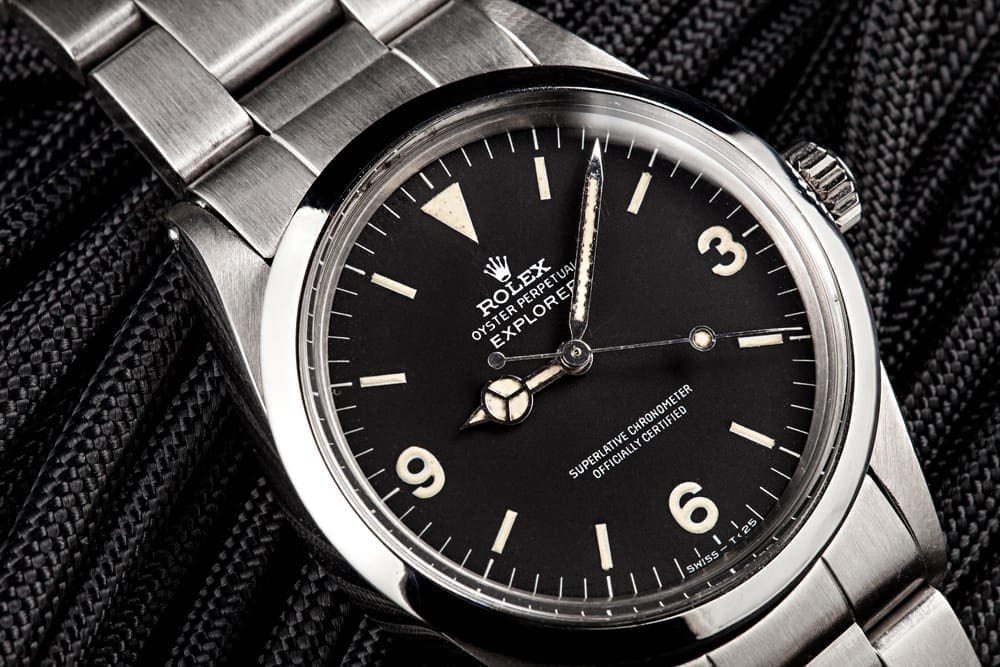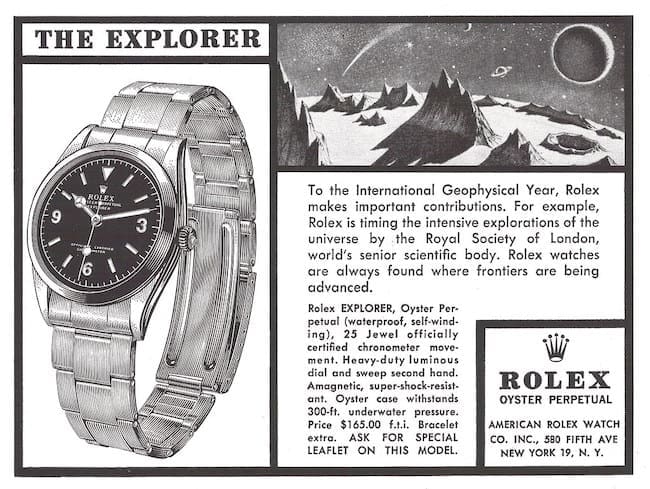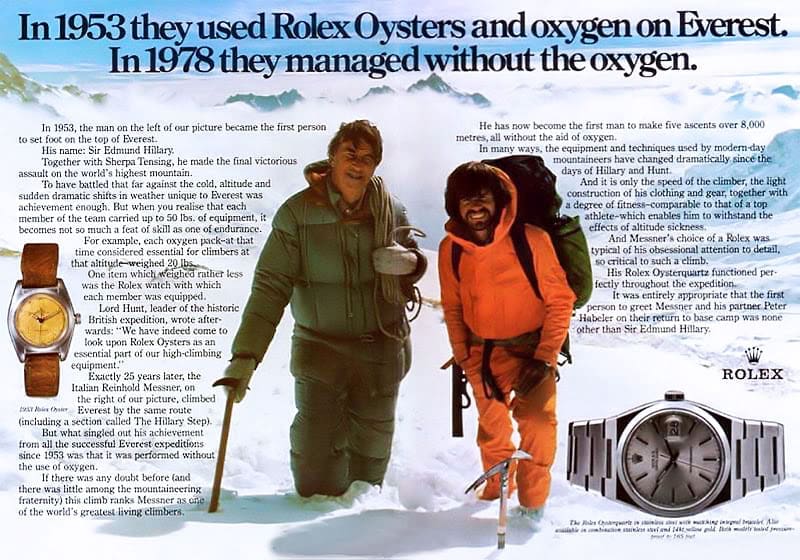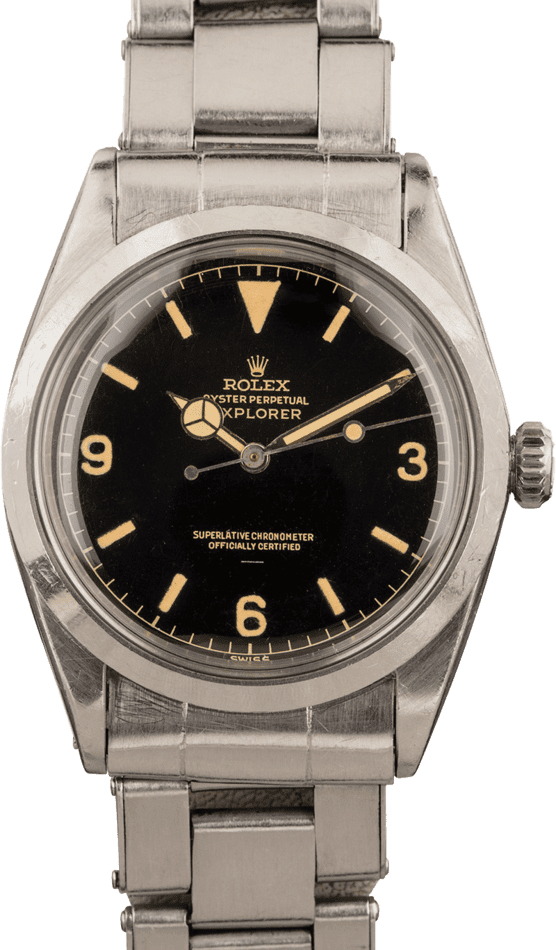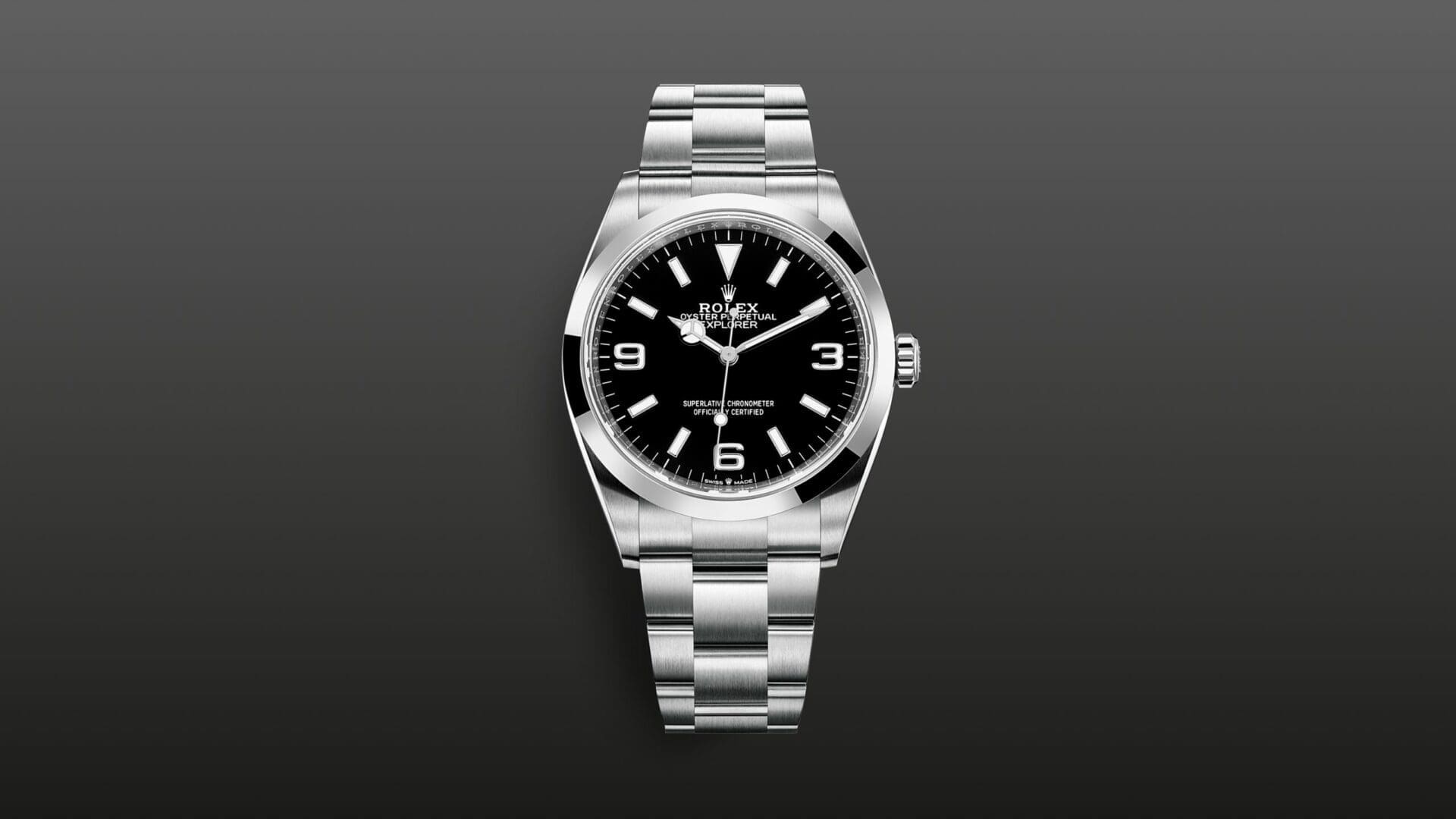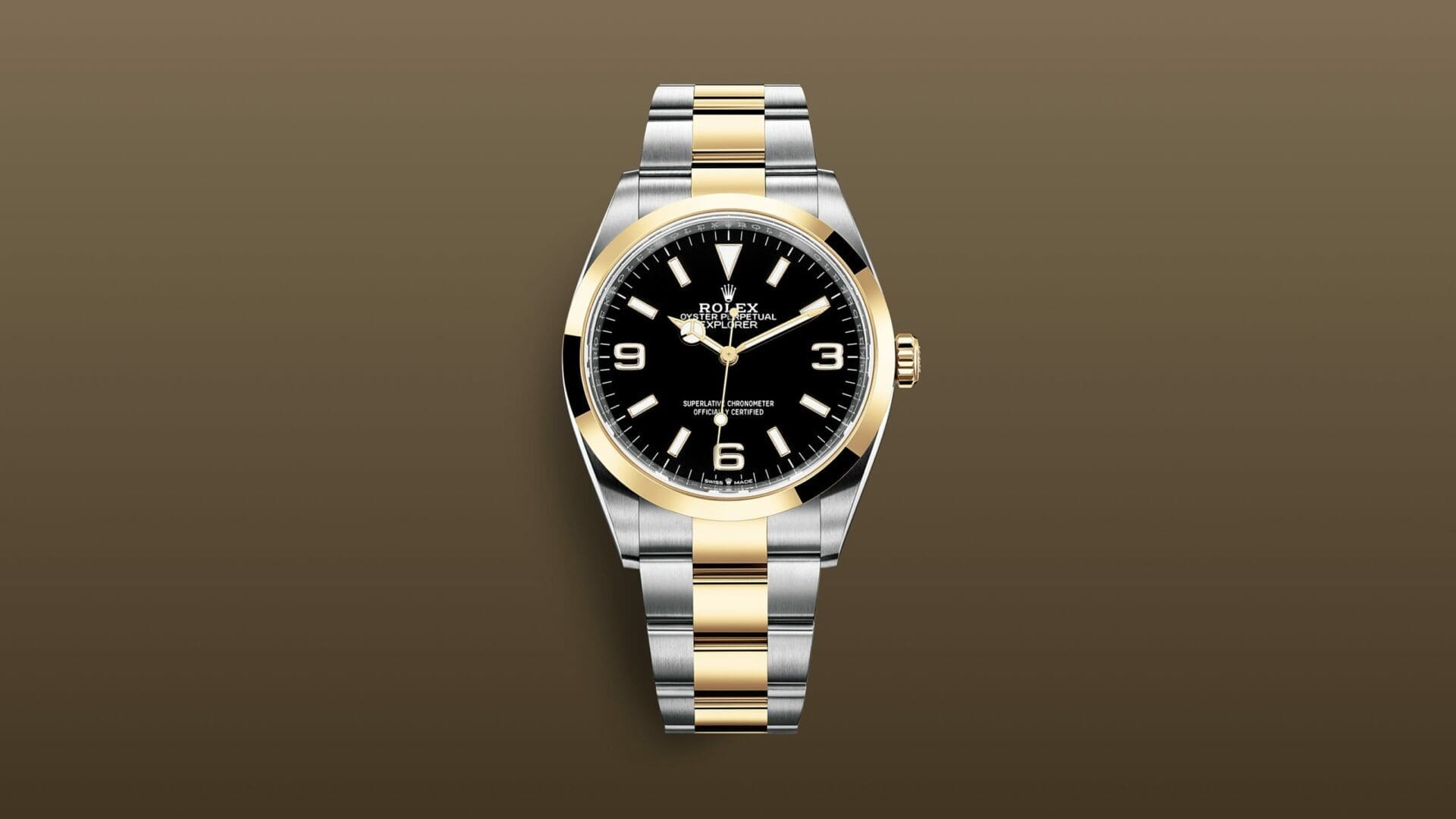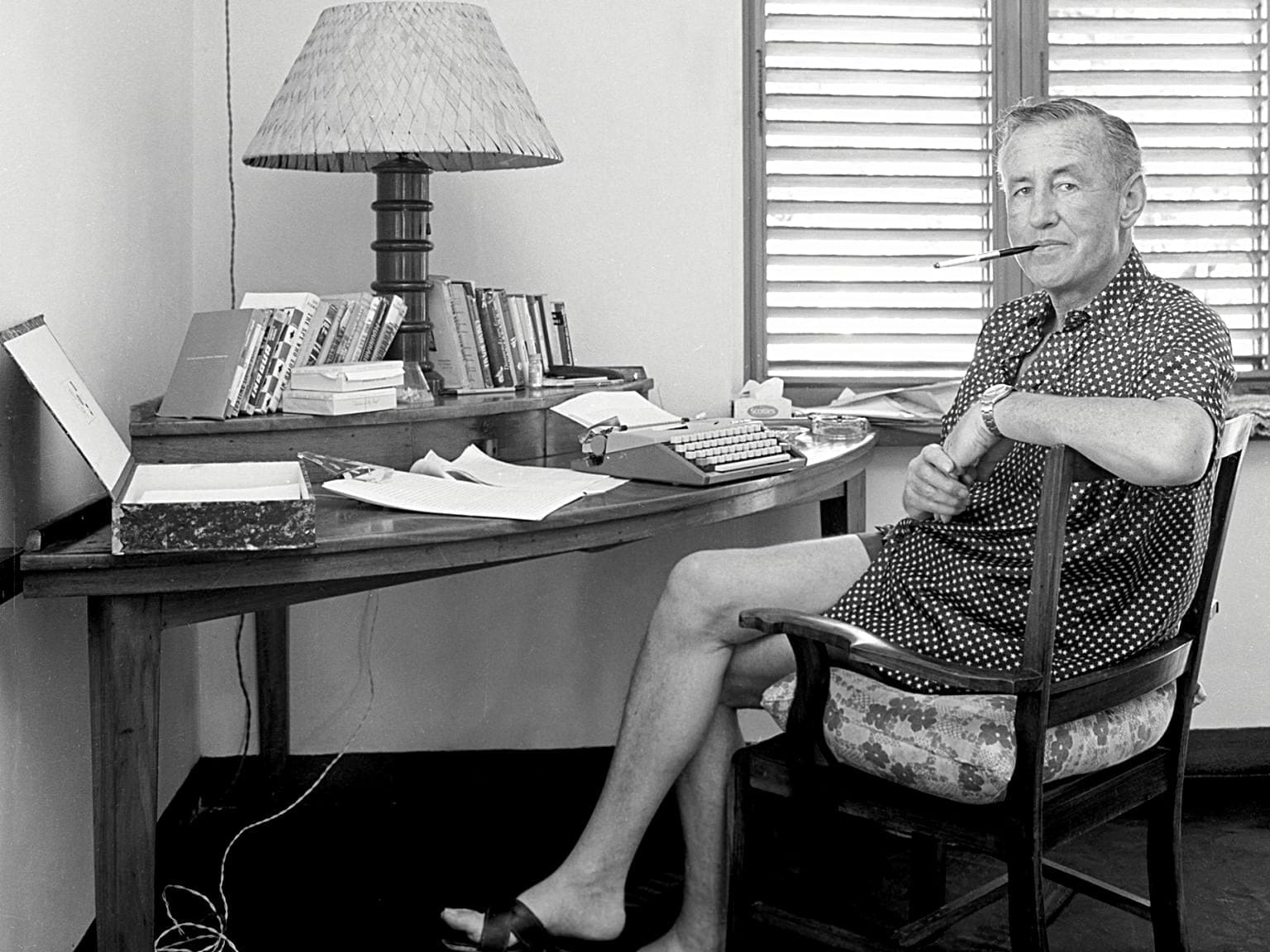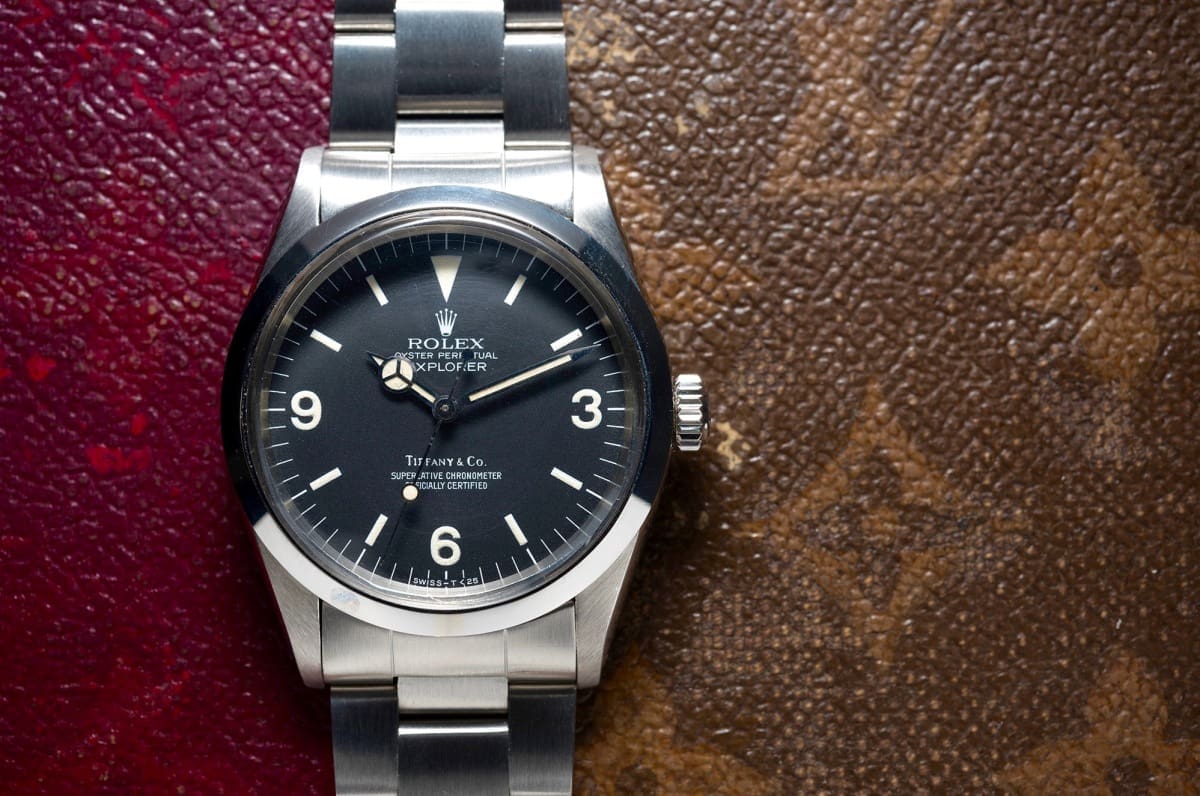The Rolex Explorer could be your one watch collection for life
D.C. HannayWelcome to The Icons, a series where we take a horological deep dive into the most legendary watches of all time. We’ll delve into the story behind the watch, its evolution over the years, famous (and infamous) wearers, the classic references, and the contemporary versions you should be checking out. This week, it’s the Rolex Explorer.
Introduction: The Rolex Explorer
“People do not decide to become extraordinary. They decide to accomplish extraordinary things.” – Sir Edmund Hillary
When it comes to iconic Rolex models, the Explorer has definitely earned its place on that list. It’s got so much going for it: A simple, yet impeccable design, fantastic legibility, real-world durability, and a history (albeit a complicated one) of adventurous exploits. There’s nothing really “extra” about the Explorer, its Spartan appearance making it a prime candidate for a “one-watch collection” (perish the thought!). For this edition of The Icons, we’re concentrating on the original Explorer I, not the larger Explorer II that was released in 1971 with its 24-hour hand, and later, GMT functionality…that’s a story for another time. So how did the O.G. Explorer reach, quite literally, such dizzying heights? Read on for an expedition through the history of this iconic timepiece.
Early History
Contrary to oft-repeated legend, mountaineer Edmund Hillary wasn’t wearing a Rolex when he summited Mount Everest along with his Sherpa guide, Tenzing Norgay, in 1953. They were the first on record to reach the peak, after many failed attempts by others, but the watch on Hillary’s wrist was a Smiths A409, a British brand. Rolex had been testing watches with mountaineering expeditions for years by then, and had supplied the ninth British expedition to Everest with modified Oyster Perpetual watches (Smiths was a supplier as well), but Hillary happened to be wearing the Smiths that day. Accounts vary, but it’s believed that Norgay did have the Rolex on at the summit. Not that it mattered for Rolex’s marketing efforts in the subsequent years, as they’ve traded on their exploring heritage ever since.
In an evolution of those Oyster Perpetual models used by the climbers, Rolex released the 6150, the first model to actually carry the Explorer name on the dial (however, most versions used the word “Precision” in place of “Explorer”). This was the model that established many of the design cues we know so well today, including the 36mm case and 3-6-9 numeral layout on the no-date dial. And being an Oyster Perpetual, it sported a self-winding movement, and was water resistant as well.
The following version, the 6350, made its debut in 1953, and was the first iteration to be known solely as the Explorer. Notably, it featured something its predecessor did not: Chronometer certification. Features varied throughout the run, with some versions getting “Mercedes” handsets, and others pencil hands, as well as glossy or “honeycomb” (actually diamond) textured black dials. The 6350 is highly sought, with examples fetching well into six figures. Pretty remarkable for such a simple watch, but such is FOMO and vintage Rolex mania.
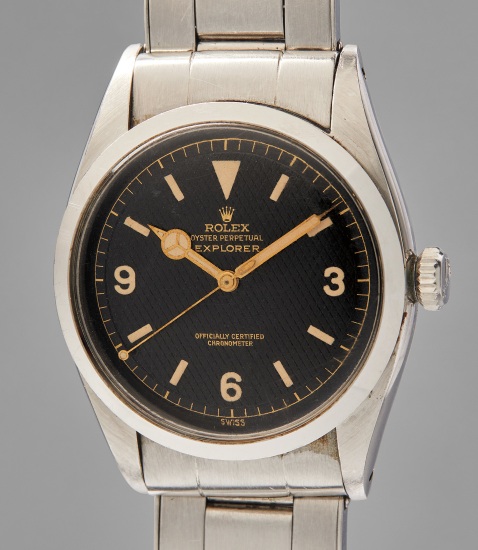
The 6350 was followed by the 6610, some variants of which had its 50 metre depth rating printed on the dial. Then in 1960, the Explorer that most collectors associate with the name was introduced, the mighty 1016.
The 1016 had a remarkable production run, lasting from 1960 all the way through 1989, with incremental changes made along the way. The new version proudly showed off its timekeeping prowess, proclaiming “Superlative Chronometer Officially Certified” on the dial. The new hacking seconds 1560 movement reliably ticked along until it was phased out in 1964 with the debut of the higher-beat 1570. The 1570 remained the primary calibre in the 1016 through a variety of subtle variations, all the way until the late ‘80s, when some big changes lay on the horizon.
Rise To Fame
While retaining the 36mm size and simple, uncluttered design cues of the 1016, the all-new new Explorer I 14270 was a whole new watch. Gone was the venerable 1570 movement, replaced with the new 28,800 vph calibre 3000. Other seismic changes to the Explorer were a sapphire crystal, a lacquered dial, and something that changed the entire look of the watch: Applied indices and modernistic, squared-off numerals that recalled the numeral font of another Rolex model, the Air-King. Additionally, by the end of the 14270’s run near the turn of the millennium, the tritium lume had been supplanted with the much brighter LumiNova. And throughout the model’s many incremental changes since, it’s this look that continues to inform the appearance of the Explorer I to this day.
The next big change was quite literally that, a jump up in case size to a thoroughly modern 39mm with the release of the 214270. For many, this changed the entire vibe of the Explorer, bumping it up against the other steel sports watches in the Rolex catalogue, such as the Submariner. Some customers loved the new, larger size, while others recoiled at the update, and felt that it completely changed the spirit of the Explorer.
The new big boi version lasted until 2021, when Rolex once again flipped the script, discontinuing the 39mm iteration, and shrinking the case back down to the original’s 36mm with the Reference 124270. While maybe not completely unexpected, the new Explorer also brought along something that no one saw coming: A two-tone version (!) in steel and Rolesor gold, the 124273.
The newest Explorers gained the newest movement as well, the 3230, with greater accuracy, improved antimagnetic and shock resistance, and a whopping 70-hour power reserve. These contemporary Explorers, while most certainly luxury timepieces, still embody the compact, discreet, yet rugged demeanor of their legendary forefathers. And going by the waiting lists at Rolex authorised dealers, retaining the original adventurous spirit of the Explorer was a prudent move.
Famous Wearers
Besides the storied adventurers that have traipsed through rainforests, scaled imposing peaks, and mapped previously uncharted territories, a number of other notables have chosen the Explorer as their timepiece.
The progenitor of the entire James Bond oeuvre, Ian Fleming, famously wore a classic 1016 as his daily, and established in his novels that 007 was also a Rolex man. Besides authoring the seminal Bond novels, Fleming had a remarkable life aside from the world’s favourite secret agent, having worked for British Naval Intelligence before his writing career. Fleming has also been the subject of several books and films, well worth a fall down the rabbit hole. His favourite place to write was at his home in Jamaica, where visitors can rent his villa, Goldeneye, and see his actual writing desk, preserved as it was during the 1950s.
One of the nicest guys in Hollywood (and among its most bankable stars ever), Tom Hanks has long been a Rolex fan, and counts a modern Explorer I among his collection. A perfect everyday watch for the quintessential Everyman.
Actor Matt Damon has a discreet, carefully considered watch collection, including a classically understated vintage 1016 Explorer.
Favourite Models
This is the part of the show where I usually wax on about my favoured modern variants of the timepiece in question, but Rolex currently makes just two measly versions of the Explorer I, so I’ll be thinking outside the watchbox today and throw in a vintage pick. Just make sure that whatever you do, for God’s sake, buy the seller.
Here we go with the bog-standard, no-frills Explorer I, the 124270. Its retro-yet-modern appearance and 36mm size are established classics, but the materials and movement tech are quite contemporary, and luxe touches like white gold applied indices, an engraved rehaut, 100m water resistance, and super bright blue Chromalight lume are all welcome features in a Swiss luxury watch. The whole package says “stealth wealth”, especially given the fact that prices on the secondary market hover around $3-$4K above retail.
For an ‘80s experience that Explorer wearers never had back then, the new two-tone 124273 is a bold choice. Specs and features have already been discussed here, but the addition of Rolesor gold on the bezel, crown, indices, and bracelet centre links means you get a sight more flash for your cash. Again, unless you’re pals with the A.D., you’ll pay well above retail for the privilege.
I generally don’t give advice when it comes to vintage timepieces, for several reasons, but chiefly, because there are experts that are far better suited to do so. The market can be a minefield, rife with forgeries, frankens, and outright scams. But if you have an iconic reference like the 1016 on your radar, then nothing else will do. Be prepared to cough up for the humble little bugger, however. Prices start around $14,000 USD for thrashed-to-middling examples (or those of questionable provenance). And if you want to play in the big leagues, enlist the help of an expert in sourcing yours, then get ready to pay for it. The good stuff will run you $25K and up…sometimes way up. Here’s a good place to start your pursuit:




